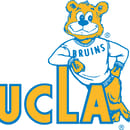Valentine’s Day is said to come from the ancient Roman feast of Lupercalia. Each year, between February 13 and February 15, the Romans would celebrate the coming of spring. One of these rituals involved sacrificing an animal and using its skin to whip women, in an effort to increase their fertility. Furthermore, names were placed into a lottery and the randomly matched men and women would spend the holiday together, marrying after if they liked each other at the end of Lupercalia.
This holiday was replaced with a celebration for a martyr, Valentine, in the 5th century A.D. There are different legends about who St. Valentine was. One legend claims he was an imprisoned Christian priest who fell in love with his jailer’s daughter, and signed a love letter to her with, “from your Valentine.” Another legend illustrates him to be a priest who ignored Emperor Claudius II’s ban on army men marrying and continued to marry couples until his execution.
However, those tragic tales are no longer what we think of when we think of Valentine’s Day. Valentine’s Day has taken root in the United States because of the nation’s consumer culture. Even in the past, as the economy took turns for the worse, the holiday always generated a large amount in retail sales. Furthermore, Valentine’s Day has spread from a holiday surrounding romantic love to a holiday that is about all kinds of love. People routinely shower their friends, family members and even pets on Valentine’s Day. Elementary schoolers deliver valentines to each one of their classmates. And the most common valentine? The greeting card. In a survey done in 2010, 55% of US consumers planned to send at least one greeting card. The Greeting Card Association says that about 190 million Valentine’s Day cards are sent each year, not including the cards that elementary schoolers send to each other.
Valentine’s Day has become a tradition in the United States. Now referred to as a Hallmark holiday, Valentine’s Day started in Europe, when France’s Duke of Orleans sent a card to his wife while he was held prisoner. Hallmark joined the campaign in 1913, and since then, the market for Valentine’s Day cards has moved beyond lovers to include love in all types of relationships. In addition, ever since Hallmark jumped on the Valentine’s Day wagon, the day has become associated with chocolates, candies and flowers. Although Hallmark denies it, many people believe that the holiday is a marketing scheme meant to get your significant other to buy gifts and cards.
Valentine’s Day has a rich history but it has become more about gift-giving and exchanging cards rather than the love that started it all. It is important to recognize the significance of expressing love to your dear ones, beyond the gifts and the candy. Still, while the day may now be nicknamed as the Hallmark holiday, it would not hurt to give your friends and family a token of your appreciation this February 14th.



